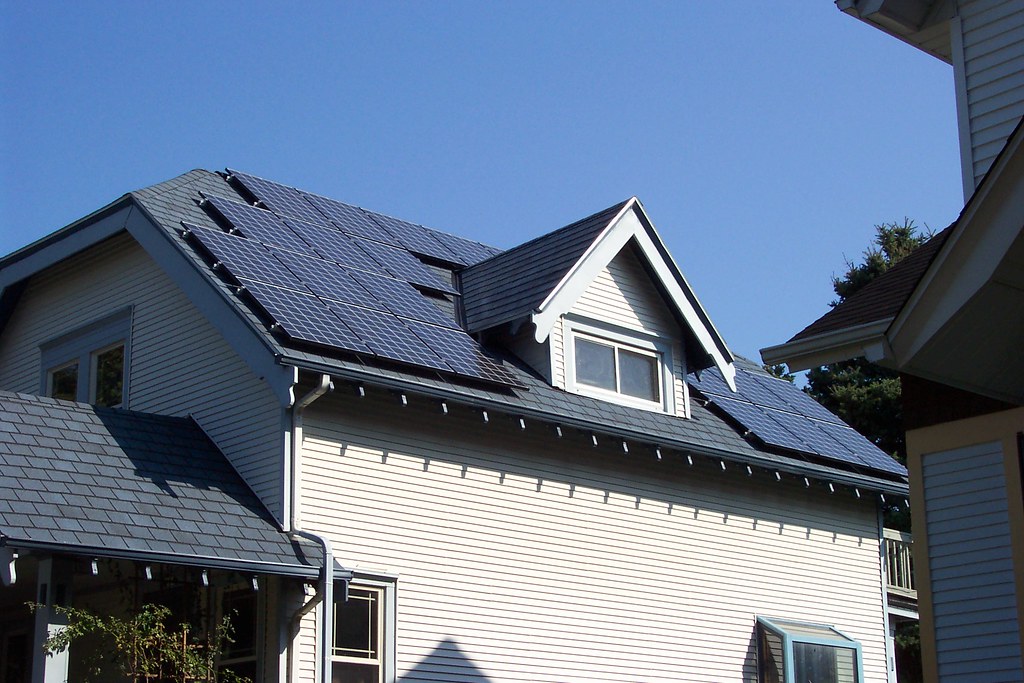When it comes to using solar energy to power your home, there are a few steps to take. After you’ve decided which solar option is best for you, follow the steps below that apply to you. More information on the specific procedures you’ll need to take to power your home with solar energy can be obtained from your solar energy installer and your local utility company.
1. Look into the energy efficiency of your home.
Before opting for residential solar rooftop system, homeowners should be aware of their entire electricity usage and investigate low-cost, easy-to-implement efficiency solutions.
The following resources will help you save money on power:
Home energy audits: A house energy audit can help you figure out where you’re wasting energy and what steps you can take to increase your home’s efficiency.
Electronics and appliances: Make more efficient use of your appliances and electronics, or consider investing in high-efficiency products.
Heating and cooling: If you heat and cool your home using electricity, your heating and cooling requirements will have a considerable impact on the amount of solar energy you require. The quantity of electricity you need to produce with solar will be reduced if you weatherize your home and heat and cool it efficiently.
2. Evaluate Your Solar Capability
Assess the potential solar energy that can be produced at your address before deciding on the best strategy to use solar electricity at home. Because PV technologies generate power from both direct and scattered sunlight, the solar resource in the United States is abundant for home solar electric systems.
The amount of electricity created by a solar energy system at a given location, on the other hand, is determined by how much of the sun’s energy reaches it and the system’s size.
There are several mapping programmes and tools available to assist you in determining the solar energy potential of your property. Some of the services also provide details on the system’s expected size, prospective expenses and savings, as well as local contractors.
These tools are a great place to start, and they may help you figure out whether your home is solar-ready, and if it isn’t, how to get the most out of it. While these tools are useful, they don’t account for all of the variables that must be taken into account for your specific system. You’ll need to engage with a solar installer who can give you an accurate assessment of your solar potential as well as specific advice, estimates, and equipment knowledge.
Take into account the following:
Shade trees can be seen nearby. Contractors may also assist with shading evaluations, but keep in mind that your own or your neighbor’s trees are still growing and may shadow your system in the future.
Your roof’s age and how long it will be before it has to be replaced. If you think you’ll need a new roof in the next few years, you should think about doing so before adding solar.
Restrictions or permission requirements imposed by the neighbourhood or homeowner association (HOA). Some states now have “solar rights provisions,” which limit HOAs’ authority to regulate solar installations or access. These regulations differ from state to state and municipality to municipality; consult your HOA covenants and state legislation for more information.
3. Evaluate Your Solar Energy Options
If you want to opt for residential or commercial rooftop solar, purchasing and building a system that you totally own and operate is no longer the only choice.
Some of the alternatives for using solar energy at home are listed below; check with local installers and your utility to see what programmes are available in your region.
Community Or Shared Solar Leases Power Purchase Agreements (Ppa) Solarize Programs Purchasing A Solar Energy System
4. Calculate your solar energy requirements
Gather information about your home and electricity usage to assist your contractor in making recommendations for the type and size of your system. You can search for providers based on your electricity usage at Power to Choose Org and find affordable plans and rates without having to install solar panels. This is a great way to save money and reduce your carbon footprint.
Examine your electric bills to figure out how much electricity you’ll require each year. Your consumption will be displayed in kilowatt-hours (kWh). Examine each month of the year; certain months may require more electricity than others ( g., if you run the air conditioner in the summer). Some utilities include tools to aid in this review.
Take into account any upcoming adjustments. Your electricity demands may increase if you plan to buy an electric vehicle or build a house expansion. If you continue to make significant modifications to increase the energy efficiency of your home, you may consume less electricity than you did previously.
